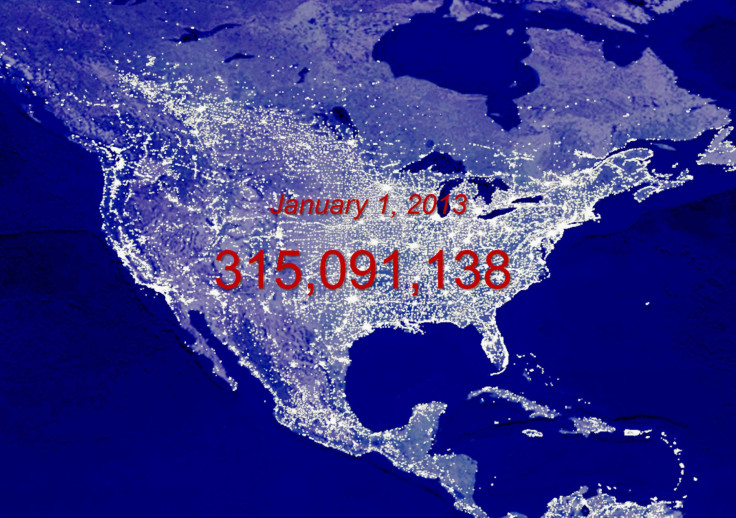US Population Tops 315M In January 2013 As Americans Get Older, More Diverse

America started off 2013 with a new population milestone -- as of Jan. 1, more than 315 million people lived in the U.S., according to the U.S. Census Bureau.
Since the beginning of 2012, the U.S. has had a net population gain of more than 2.2 million and has grown by more than 6.3 million since the last nationwide Census, taken in April 2010. For January 2013, the Census Bureau is estimating that the country will see an average of one birth every eight seconds, a death every 12 seconds and one person immigrating every 40 seconds.
The country has come a long way from 1790, when the first census determined that there were just under 4 million people in 13 states (including just under 700,000 slaves). But in recent years, population growth has decelerated, with change from July 2011 to July 2012 amounting to only a .75 percent increase.
Robert Lang, an urban affairs researcher at the University of Nevada-Las Vegas told USA Today in December that recent population growth in the U.S. has been "pretty anemic.”
“You see the impact of the recession and reduced immigration into the U.S. We're not on pace to grow even 10 percent over the decade,” Lang said.
In 2012, the CIA Factbook estimated that the fertility rate in the U.S. was 2.06 children per woman -- just slightly below the replacement fertility rate required to maintain a stable population, which is 2.1 children. Immigration levels are what keep America growing.
But many studies show that immigration levels are also on the decline.
“In the early 2000s, immigration accounted for roughly 40 percent of U.S. population growth, leaving 60 percent from natural increase,” Mark Mather wrote for the Population Reference Bureau last May. “During the past few years, however, net international migration is estimated to have accounted for only 30 percent of the annual population growth.”
The decline in immigrants also adds to the cumulative aging of the U.S. population, Mather says. Most immigrants are young adults that start families after they arrive in America, creating a small bulge on the younger side of the scale. Fewer second-generation immigrants shoring up the numbers makes it harder to mask the overall greying of the U.S. population as Baby Boomers age.
“A decade ago, children under age 18 made up a significant component of annual population growth and exceeded the growth of those ages 65 and older,” Mather wrote. “But by 2011, these patterns had reversed: The number of people under age 18 declined by 190,000 between 2010 and 2011, while the number of elderly increased by 917,000.”
While many projections show the U.S. reaching a “majority minority” status sometime in 2042, meaning that the non-Hispanic white population will fall below 50 percent, the future is uncertain. How the U.S. economy recovers in the next few decades, and how that success or failure affects immigration and fertility levels, could shape America’s next generations.
© Copyright IBTimes 2024. All rights reserved.











